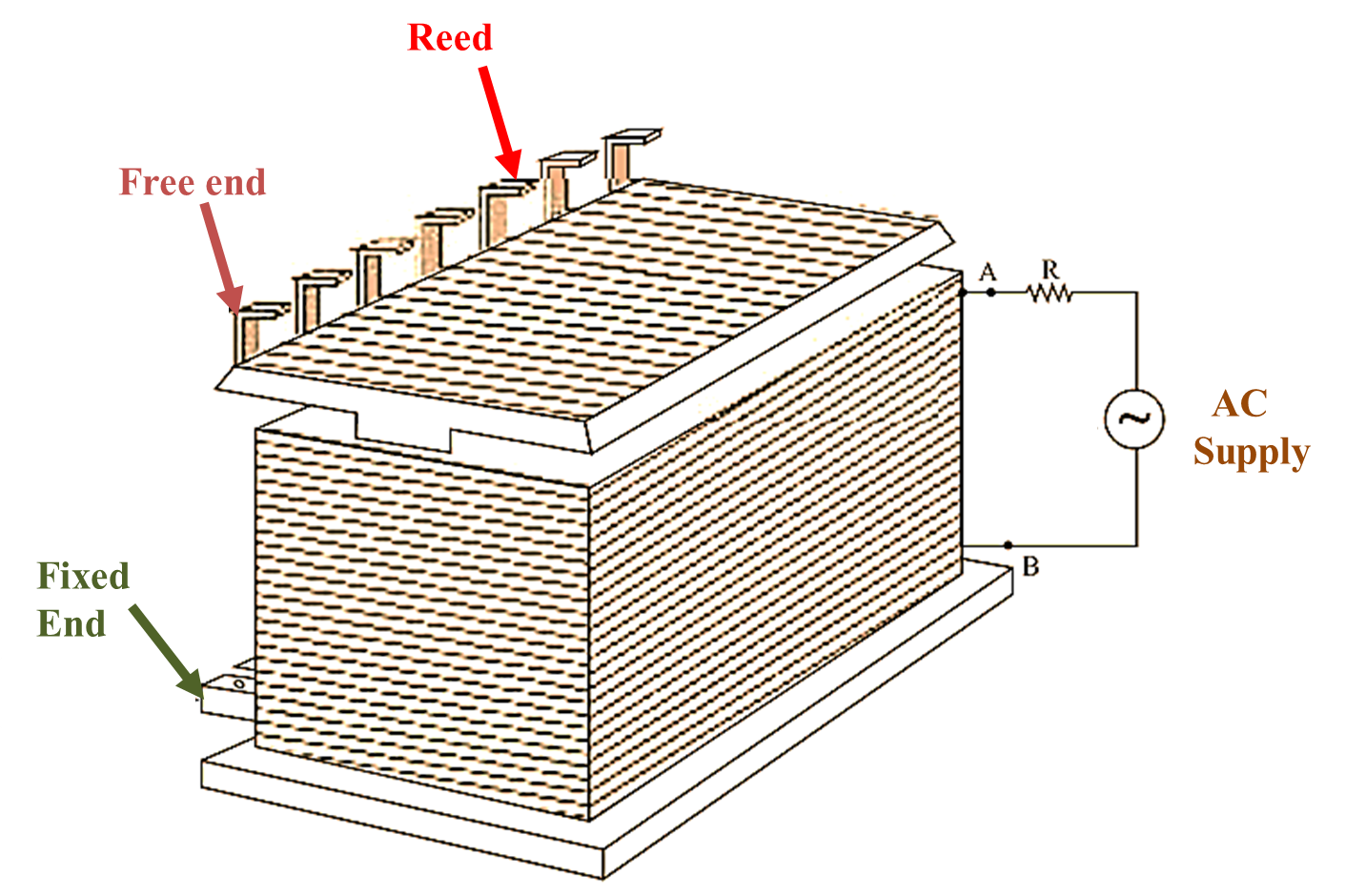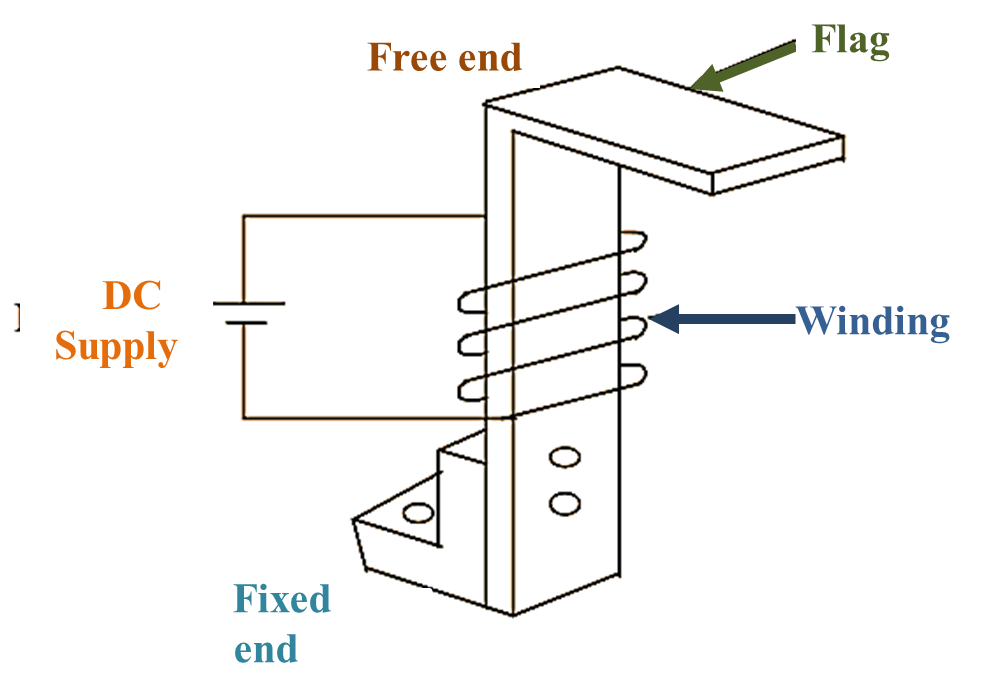The number of cycle per second of the alternating quantity is known as the frequency. The instruments used to measure frequency called Frequency Meter.
Types of Frequency Meter
There are the following instruments of determining the frequency.
- Vibrating Reed frequency meter.
- Weston type frequency meter.
- Ratiometer type frequency meter.
- Electrodynamometer type frequency meter.
Vibrating Reed Frequency Meter
The vibrating Reed frequency meter is an application of phenomenon of mechanical resonance. Hence, it is also known as mechanical resonance type frequency meter. Figure (1) shows the vibrating Reed frequency meter along with its connections. It consists of a number of reeds arranged along a side and kept closer to the electromagnet. The core of electromagnet is laminated to reduce the eddy current losses in it. The coil winding of the core is connected in series with a resistor to limit the energizing current and connected across the supply whose frequency is to be measured.

Figure (1): Vibrating Reed Frequency Meter.
One end of the reed is fixed and the other end is left free to vibrate. The top portion of the free end is bent at right angles which is known as flag. Flags are painted white to observe the vibrations clearly on the black background on the dial. The natural frequency (fn) of vibration of the reeds depends on their physical parameters such as weights and dimensions. Normally dimensions are kept constant and their weights are varied to have different values of fn. When the meter is connected across the supply, the field of the magnetic core reverses in each half cycle. As a result all the reeds start vibrating. But the reed whose natural frequency is double than frequency of supply will vibrate maximum due to the mechanical resonance.
If the frequency of the supply has to be observed for intervals of 0.5 Hz, then the natural frequencies of the reeds are maintained for intervals of 1 Hz. For example, to measure a frequency of 50 Hz supply with a range of 47.5 Hz to 52.5 Hz meter with an intervals of 0.5 Hz, the natural frequency of the reeds must range from 2 x 47.5 (= 95 Hz) to 2 x 52.5 (= 105 Hz) at ail intervals of 2 X 0.5 (= 1 Hz). It means the natural frequency of first reed should be 95 Hz, second reed 96 Hz and so on up to last reed 105 Hz. For a supply of 50 Hz frequency, the reeds with natural frequency of 99 Hz and 101 Hz will also vibrate considerably along with reed of 100 Hz. But the reed with f = 100 Hz will vibrate maximum. For a supply frequency of 50.25, the two reeds with natural frequency of 100 Hz and 101 Hz will vibrate maximum. So when two reeds are vibrating maximum then the frequency is estimated in between those two frequencies.
Range of Vibrating Reed Frequency Meter
For reed type frequency meter the reeds are ranging from 47 to 53 cycles for 50 cycles mains.
The range of the meter can be doubled by polarizing the reeds. Polarization is done by providing windings on the reeds which are energized by D.C supply as shown in Figure 2 or by directly replacing the steel reeds with permanent magnets.

Figure 2: Polarization of reeds.
Advantages of Vibrating Reed Frequency Meter
Following are the advantages of using this type of meter:
- The vibration is independent of the waveform and magnitude of the supply frequency, provided that the voltage should not be too low to vibrate the strip.
- These reeds are not effected by the temperature variation.
Disadvantages of Vibrating Reed Frequency Meter
Following are the disadvantages:
- The variation is of 0.5 cycle per second so less that 0.5 cycles cannot be observed by this meter. So it cannot be so precise.
- To design the reeds for 0.5 cycles interval is not so easy.